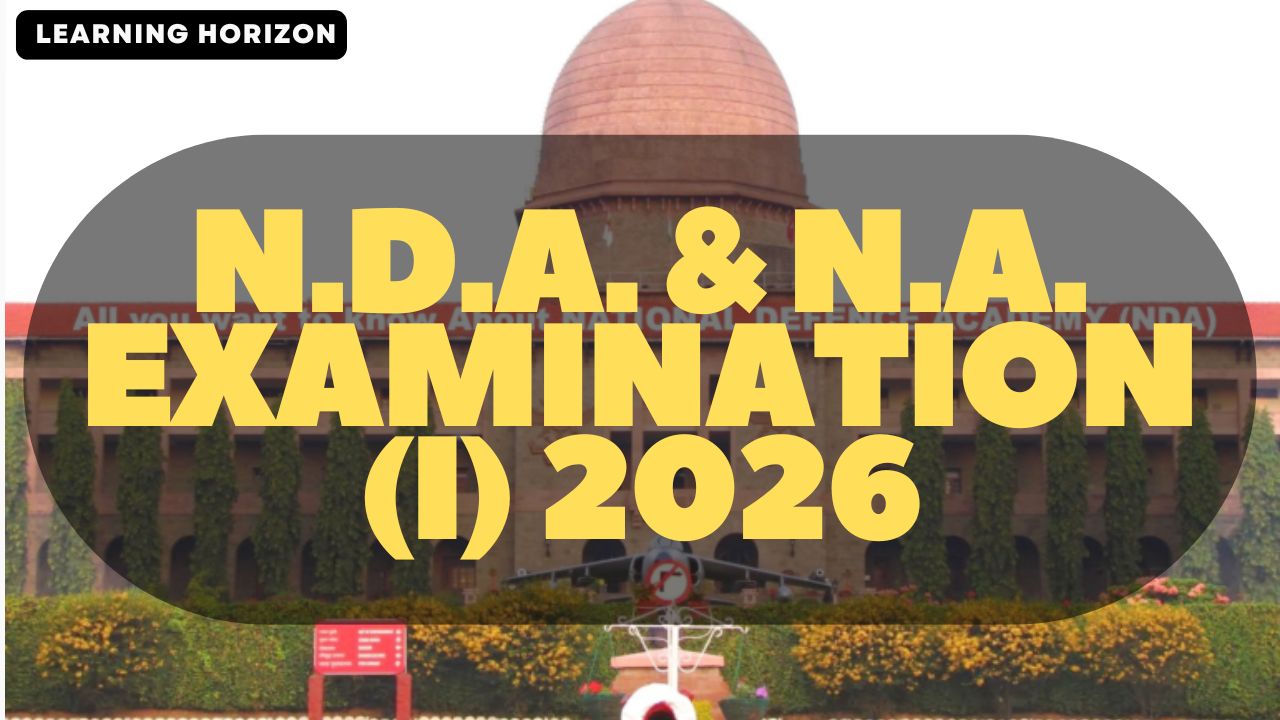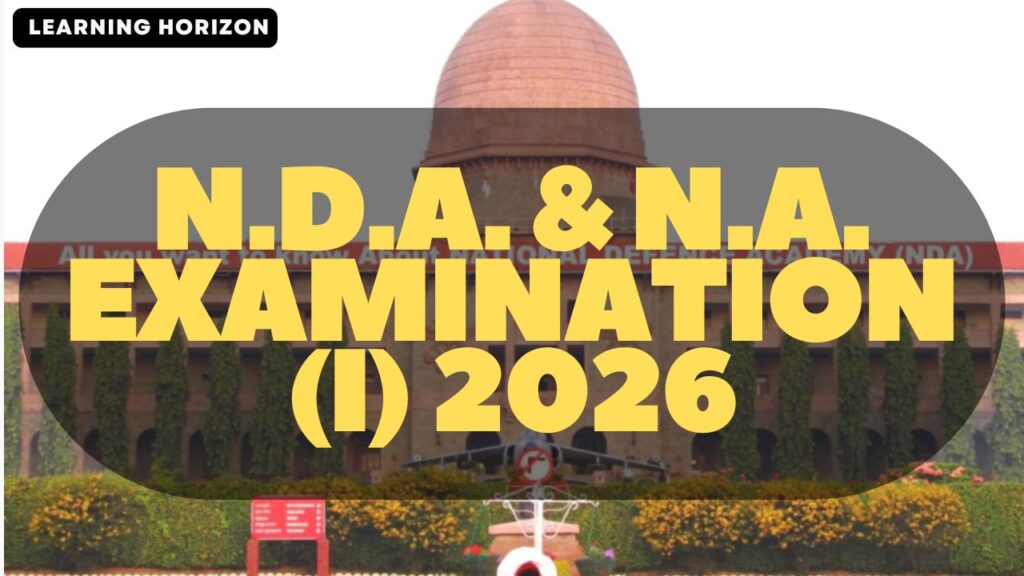
N.D.A. & N.A. Examination (I) 2026: Calendar ,Dates , exam pattern ,syllabus
N.D.A. & N.A. Examination (I) 2026 Exam date , application date
| Application Date | December 2025 |
| Exam Date | April 2026 |
| Educational Qualification | For Air Force & Naval Wings / 10+2 Cadet Entry Scheme (INA) |
| Age Limit | Between 16½ years and 19½ years |
| Exam Calendar | UPSC EXAM Calendar NDA &NA (I) |
Eligibility Criteria
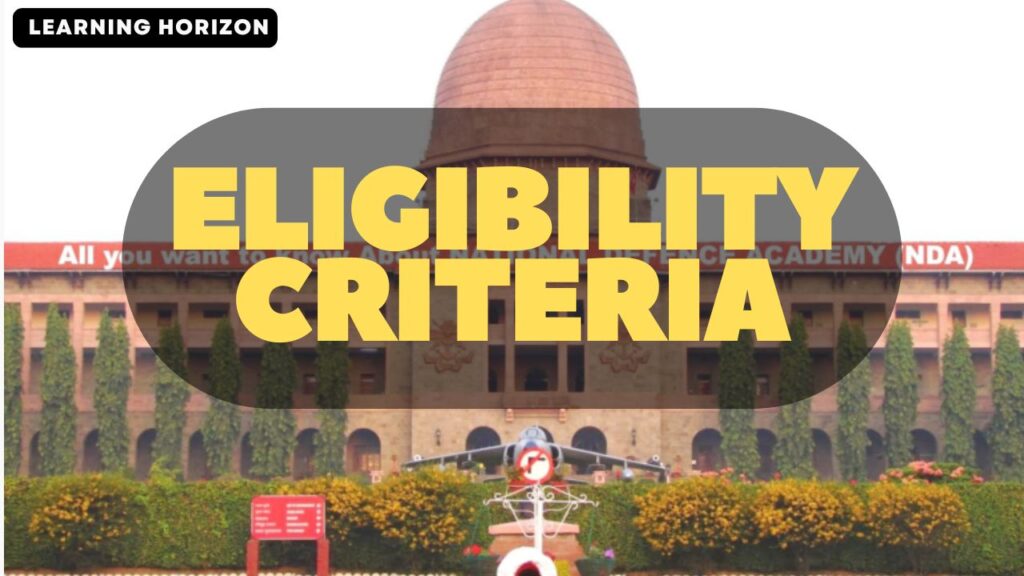
Below are the main eligibility conditions you need to satisfy to apply for NDA & NA:
| Parameter | Requirement |
|---|---|
| Nationality | Must be a citizen of India, or a subject of Nepal / Bhutan, or a Tibetan refugee who came to India before 1 Jan 1962 with intent to settle permanently. |
| Marital Status / Gender | Only unmarried candidates (male & female) are eligible. Must remain unmarried until training is complete. |
| Age Limit | Between 16½ years and 19½ years, depending on the session. |
| Educational Qualification | – For Army Wing: Should have passed (or be appearing in) 10+2 / Class 12 (any stream) from a recognized board. – For Air Force & Naval Wings / 10+2 Cadet Entry Scheme (INA): Must have passed (or be appearing in) Class 12 with Physics, Chemistry & Mathematics subjects. |
| Physical / Medical Standards | Candidates must satisfy certain physical fitness and medical requirements (height, vision, etc.) as prescribed by UPSC / training academies. (Detailed standards are in the notification.) |
| Others | Date of Birth as recorded in Class 10 or equivalent certificates will be accepted. Horoscopes or affidavits are usually not accepted. |
Exam Structure / Pattern syllabus
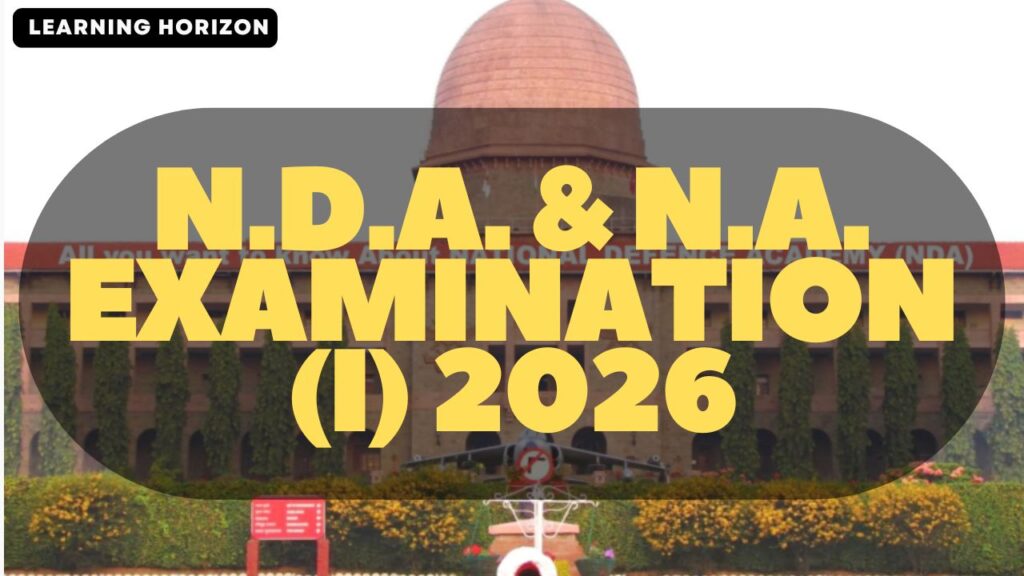
- Two papers:
1. Mathematics – 300 marks, 120 questions, duration 2½ hours
2. General Ability Test (GAT) – 600 marks, 150 questions, duration 2½ hours - In GAT, there are two parts:
A. English
B. General Knowledge / General Science & Awareness - Negative marking: For wrong answers, ⅓ of marks for that question are deducted.
- The syllabus is largely based on Class 11 & 12 level, though some baseline from earlier classes is also relevant.
1. Mathematics (Paper I)
Below is the detailed breakdown of topics you should cover thoroughly.
| Main Topic | Subtopics / Details |
|---|---|
| Algebra | Sets, operations on sets, Venn diagrams; De Morgan’s laws; Cartesian product; relations and equivalence relations; real numbers on the line; complex numbers (basic properties, modulus, argument, cube roots of unity); binary system, conversion between decimal & binary; arithmetic, geometric, harmonic progressions; quadratic equations (real coefficients); linear inequalities in two variables (graphical method); permutations & combinations; binomial theorem and applications; logarithms and their properties & applications. |
| Matrices & Determinants | Types of matrices (square, rectangular, etc.), operations on matrices; determinant of a matrix and its properties; adjoint and inverse of a square matrix; solving systems of linear equations in 2 or 3 unknowns using Cramer’s rule; matrix method for linear equations. |
| Trigonometry | Angles in degrees and radians; trigonometric ratios and identities; sum and difference formulae; multiple and submultiple angles; inverse trigonometric functions; height & distance problems; properties of triangles. |
| Analytical Geometry (2D & 3D) | Cartesian coordinate system; distance formula; equation of a line (various forms); angle between lines; distance of a point from a line; equation of a circle (standard & general); conics: parabola, ellipse, hyperbola (standard forms, eccentricity, axes); in 3D: point in space, distance between points, direction cosines & ratios; equation of a plane, equation of a line in space; angle between planes / lines; equation of a sphere. |
| Differential Calculus | Function: domain, range, graphs; composite, one-to-one, onto, inverse functions; limit and continuity (standard limits, intuition); derivative: basic rules, sum, product, quotient; derivative of composite functions; higher order derivatives; increasing/decreasing functions; maxima & minima problems. |
| Integral Calculus & Differential Equations | Integration as inverse of differentiation; integration by substitution & by parts; standard integrals (algebraic, trigonometric, exponential, hyperbolic); definite integrals; application to determine area bounded by curves; differential equations: order & degree, formation of differential equations; solving first order / first degree differential equations; growth & decay problems. |
| Vector Algebra | Vectors in 2D & 3D, magnitude & direction; unit and null vectors; addition & scalar multiplication; scalar (dot) product; vector (cross) product; applications: work, moment, geometrical problems. |
| Statistics & Probability | Statistics: classification of data; frequency & cumulative frequency distributions; graphical representations (histogram, pie chart, frequency polygon); measures of central tendency (mean, median, mode); variance, standard deviation; correlation & regression. Probability: random experiments, sample space, events; mutually exclusive and exhaustive events; probability definitions (classical & statistical); basic theorems and simple problems; conditional probability and Bayes’ theorem (basic problems); random variables as functions; simple probability models. |
N.D.A. & N.A. Examination (I) 2026: Calender ,Dates , exam pattern ,syllabus
2. General Ability Test (GAT, Paper II)
This is divided into English (Part A) and General Knowledge / General Science / Current Affairs (Part B).
A. English (Part A)
Topics typically include:
- Grammar & usage
- Sentence completion
- Spotting errors
- Synonyms & antonyms
- Vocabulary
- Fill in the blanks
- Idioms & phrases
- Cloze test (unseen passage)
- Sentence correction / improvement
- Para-jumbles / ordering of sentences
- Comprehension / unseen passages
- Cohesion in extended text
The aim is to test understanding of English and workmanlike use of words.
B. General Knowledge / Science / Current Affairs (Part B)
This is a large section. Below is a topic-wise breakdown:
| Subject | Topics / Subtopics |
|---|---|
| Physics | Physical properties & states of matter; heat, temperature, transfer of heat; sound, light, optics; laws of motion; work, energy, power; gravitation; mechanics; static & current electricity; magnetic effects; simple circuits; reflection, refraction; mirrors & lenses; measuring instruments; waves; basic modern physics. |
| Chemistry | Physical & chemical changes; elements, compounds, mixtures; atomic structure; chemical bonding; periodic table; basic reactions; acids, bases & salts; properties of important elements (H, O, N, CO₂, etc.); oxidation & reduction; metals, non-metals, etc. |
| Biology / General Science | Difference between living and non-living; cell, tissues; reproduction, growth in plants & animals; human body (basic organs, systems); nutrition, balanced diet; common epidemics, their prevention; environment, ecology; basic genetics. |
| History / Freedom Movement | Broad survey of Indian history: culture & civilization; freedom struggle in India (major movements, leaders, events); world history (revolution, war, major events, industrial revolution, etc.). |
| Geography | The earth: shape, size, etc.; latitude, longitude; Earth’s movements; climate, weather, atmospheric phenomena; ocean currents, tides; volcanoes, earthquakes; landforms; natural resources; Indian geography: physical & economic; agriculture, industries; soil, vegetation; location & distribution of key features. |
| Polity / Constitution / Civics | Basic features of Indian Constitution; structure of government; fundamental rights & duties; duties & responsibilities; concept of democracy; system of representation; local self-government (panchayats, municipalities). |
| Current Affairs / National & International Events | Important events happening in India & worldwide; awards, sports, books & authors; major government schemes; science & technology developments; important decisions, treaties; global organizations. |
Best books for NDA
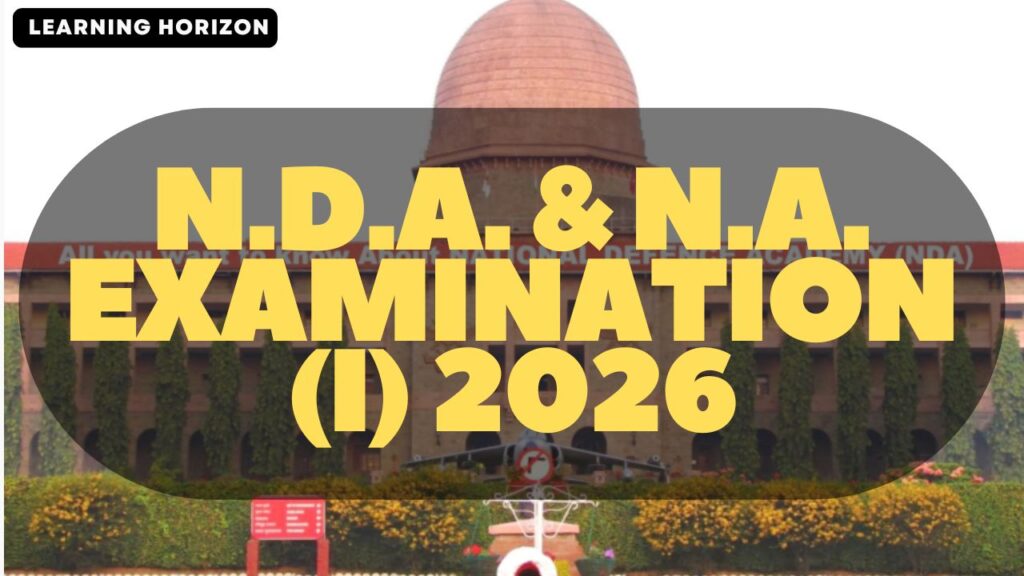
Other Highly Recommended Books / Resources
From expert / coaching / preparatory sources:
| Subject | Book / Resource | Notes / Tips |
|---|---|---|
| Mathematics | Mathematics for NDA & NA by R.S. Aggarwal | A staple for building fundamentals & practice. |
| Mathematics / Quant | Quantitative Aptitude for Competitive Examinations by R.S. Aggarwal | Good supplementary book for aptitude and speed practice. |
| English / Grammar / Vocabulary | Objective General English by S.P. Bakshi | Widely used for competitive exams including NDA. |
| English / Grammar | Wren & Martin — High School English Grammar & Composition | Good for building a strong base in grammar. |
| Vocabulary | Word Power Made Easy by Norman Lewis | Useful to build word bank and usage skills. |
| Physics / Science | NCERT Physics (Class 11 & 12) | Solid source for base concepts. |
| Physics / General Science | Concepts of Physics by H.C. Verma | Helps deepen conceptual understanding in physics. |
| General Knowledge / GK | General Knowledge by Manohar Pandey | Frequently recommended for current affairs & general awareness. |
| General Knowledge / GK | Lucent’s General Knowledge | A concise reference for many GK topics. |
| History | India’s Struggle for Independence by Bipan Chandra | Good for the Indian History section. |
| Geography / General Studies | Geography of India by Majid Husain | Covers physical, economic and human geography of India. |
| Current Affairs / Magazine | Pratiyogita Darpan, Competition Success Review, Manorama Yearbook | Useful for keeping up with latest events and background facts. |
How to Use These Books Effectively
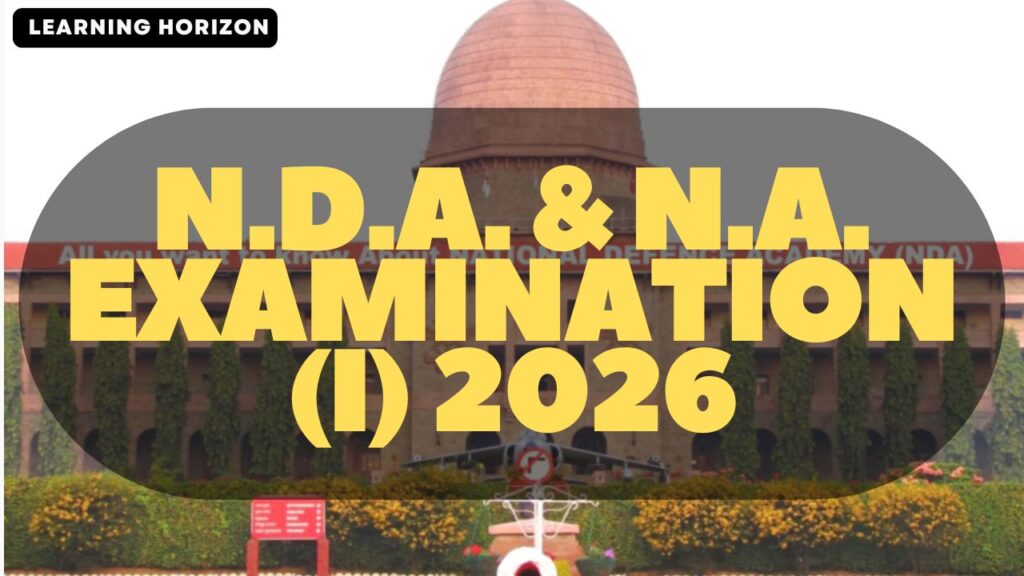
- Start with basics: Use NCERT / core textbooks for concept clarity before jumping into advanced or competitive books.
- Focus on weak topics: Identify the chapters you find hard (e.g. Calculus, Polity, etc.) and spend more time there.
- Regular practice: Solve MCQs from books like Pathfinder, Oswaal, and PW regularly under timed conditions.
- Past years’ trend: Use solved papers to understand recurring topics, question patterns, level of difficulty.
- Revision and notes: Maintain short notes / formula sheets. Before exams, revise using these.
- Stay updated: For GK/current affairs, daily reading of newspaper + monthly magazines is critical.
